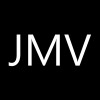Context
Economic importance and ways of promoting the project
Recent structural modifications of the dairy exploitations (e.g. reduction in the number of farmers, increase in the size of the herds) oblige us to find new tools which make it possible to the Walloon dairy producers to better control all the factors related to the increase of the production, making their work more profitable. Moreover, confronted with the emergence of new producer countries in an extremely competing dairy market, it is vital for this strategic sector of Walloon agriculture to become more competitive by proposing a milk of comparable quality, verily higher.
In order to overcome the reduction in the workforce and the increase in workload, new technologies must be developed. These tools will assist the farmer to control and manage the herd, bringing an added-value to the production.
Objectives
The main aim relates to the development of an automated system directly connected to a station of the milking parlor inside the experimental CRA-W farm. The recording device uses near infrared spectrometry (NIR) to instantaneously estimate a certain number of parameters related to milk composition and quality.Description of tasks
The use of a Fourier transform NIR (FT-NIR) instrument, equipped with fiber optic probes, is considered here. This type of equipment allows successive measurements, at several different places, while preserving a sufficient spectral quality in order to predict a maximum of parameters. Then, the recourse to Chemometrics (application of mathematical tools, in particular statistics) makes it possible to move from spectral measurement to chemical information and to develop complex calibrations.
The daily and automatic acquisition of measurements during the milking process, combined with predictive models, would make the management of some positions easier. Indeed, some major posts have become more and more difficult to manage efficiently while the size of the average farm keeps increasing. In the long term, the integration of these parameters in predictive models should improve the nutritional quality of milk, the feeding, the genetics, the health state, the fertility of the herd, and increase the economic output.
Partners
• Bruker Optics GmbH, NIR & Process Technology (Ettlingen, Germany) : A. Niemöller, A. Kok and O. Maute.
• Wetlands engineering (Louvain-la-Neuve, Belgium) : C.-M. Bols, N. Friob and X. Wattiez.
CRAW off coordinator
CRA-W/D4/Frédéric DeharengFunding
- DGARNE











